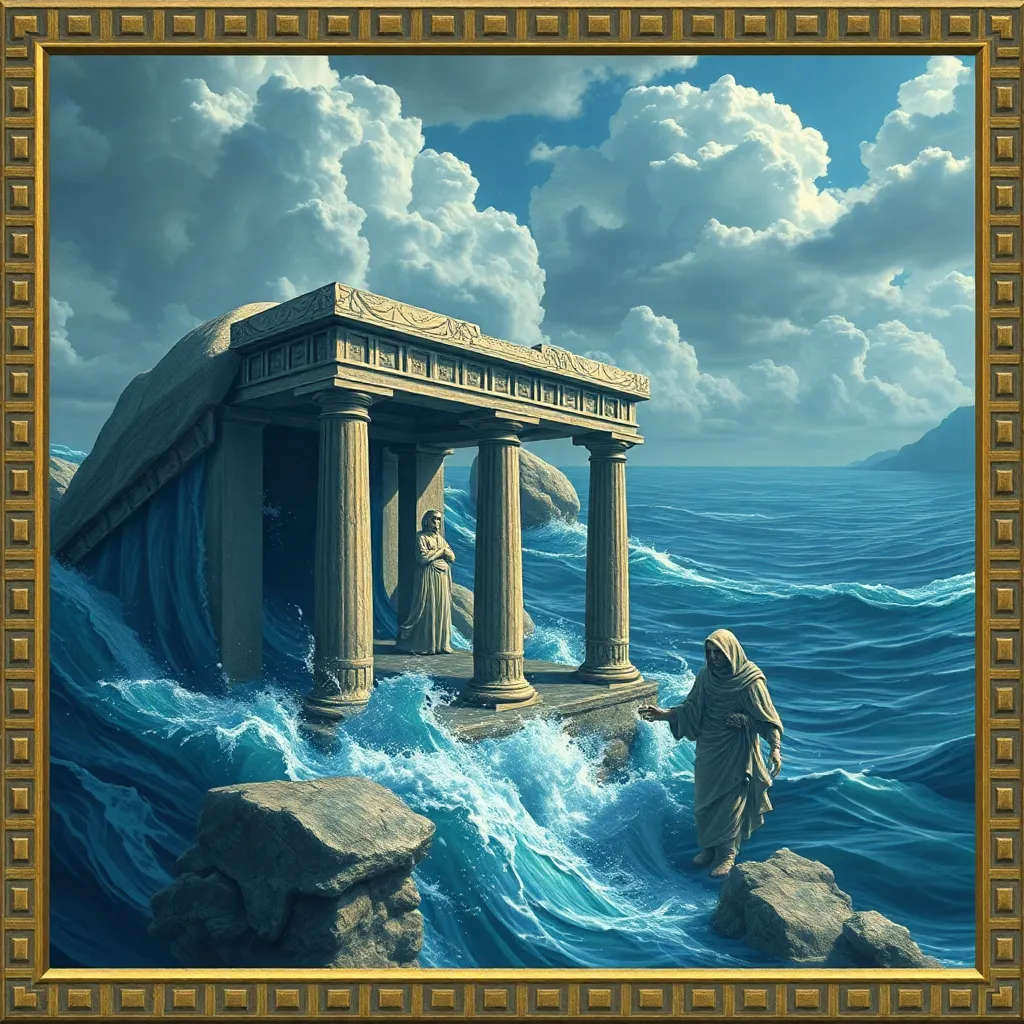The Odyssey: An Analysis of Its Poetic Techniques
I. Introduction
“The Odyssey,” attributed to the ancient Greek poet Homer, stands as a monumental epic that has shaped the foundations of Western literature. This narrative follows the enduring journey of Odysseus as he strives to return home after the Trojan War, encountering numerous obstacles and adventures along the way. Its rich tapestry of storytelling is enhanced by various poetic techniques that not only embellish the narrative but also deepen its thematic significance.
The importance of these poetic techniques lies in their ability to evoke emotions, create imagery, and reinforce the epic’s central themes. This analysis aims to explore the various poetic devices employed in “The Odyssey,” highlighting their crucial roles in character development, thematic expression, and the overall impact of the epic.
II. The Use of Epic Similes
A. Definition and significance of epic similes
Epic similes are extended comparisons that often span several lines, drawing vivid parallels between the subject and a more familiar or relatable image. These similes serve to enhance the reader’s understanding and engagement with the narrative.
B. Examples from “The Odyssey”
- In Book 9, Odysseus compares himself to a lion when confronting the Cyclops: “As a lion, when he sees a herd of cattle, rushes forth…”
- Another notable simile occurs when he likens his men’s fear to that of frightened birds: As a flock of birds, frightened by a hawk…
C. Impact on character development and thematic depth
These epic similes not only serve to illustrate the physical and emotional states of characters but also enrich the thematic elements of courage, fear, and the struggle for survival. By making such comparisons, Homer invites readers to feel the intensity of Odysseus’s experiences on a more personal level.
III. Dactylic Hexameter
A. Explanation of dactylic hexameter and its role in oral tradition
Dactylic hexameter is a metrical pattern consisting of six feet, where each foot can be a dactyl (one stressed syllable followed by two unstressed syllables) or a spondee (two stressed syllables). This rhythmic structure is vital to the oral tradition, providing a musical quality that aids in memorization and recitation.
B. How this meter influences the rhythm and flow of the poem
The use of dactylic hexameter creates a fluid and dynamic rhythm that mirrors the action and emotions depicted in the epic. It allows the narrative to ebb and flow, reflecting the tumultuous journey of Odysseus.
C. Examples showcasing its effectiveness in storytelling
Several passages in “The Odyssey” exemplify the effectiveness of this meter. For instance, the opening lines set a grand tone, establishing the epic’s scale and importance through its rhythmic beauty.
IV. Repetition and Formulaic Expressions
A. Understanding repetition in oral poetry
Repetition is a hallmark of oral poetry, serving as a mnemonic device that aids in the performance and retention of the narrative. It reinforces key themes and emotions, making them more impactful.
B. The role of formulaic phrases in enhancing memory and recitation
Formulaic expressions, such as “the grey-eyed Athena” or “the wine-dark sea,” provide a familiar framework for the audience, allowing for easier recall and engagement with the text.
C. Analysis of specific instances and their effects on the narrative
One prominent example is the repeated invocation of divine intervention, emphasizing the role of gods in human affairs. This repetition not only underscores the epic’s themes of fate and divine influence but also enhances the oral tradition’s rhythm.
V. Imagery and Symbolism
A. Exploration of vivid imagery within the text
Homer’s use of vivid imagery brings the world of “The Odyssey” to life. Descriptions of landscapes, battles, and the emotional states of characters create a rich visual tapestry that captivates readers.
B. Key symbols and their meanings (e.g., the sea, homecoming)
- The sea symbolizes both the journey and the challenges Odysseus faces.
- Homecoming represents the ultimate goal of the narrative, embodying themes of loyalty and perseverance.
C. How imagery enhances themes and emotional resonance
Through powerful imagery, the epic conveys deep emotional truths and complex themes, allowing readers to connect with Odysseus’s struggles on a profound level.
VI. Characterization through Dialogue
A. The role of dialogue in revealing character traits
Dialogue in “The Odyssey” serves as a critical tool for character development. The way characters speak reveals their personalities, motivations, and relationships with others.
B. Examples of significant conversations and their implications
- The exchanges between Odysseus and Athena highlight his intelligence and resourcefulness.
- Conversations with Penelope illustrate her loyalty and strength amid uncertainty.
C. The impact of spoken words on the reader’s perception of characters
The dialogue provides insight into characters’ inner thoughts and feelings, shaping the reader’s understanding and emotional response to them.
VII. Themes Reflected in Poetic Techniques
A. Exploration of major themes (e.g., loyalty, fate, heroism)
The themes of loyalty, fate, and heroism permeate “The Odyssey,” driving the narrative forward and shaping characters’ journeys.
B. How poetic techniques reinforce these themes
Poetic techniques such as imagery, repetition, and epic similes work in concert to reinforce these themes, enhancing the emotional weight of the story.
C. Interconnections between form and thematic content
The interplay between form and content in “The Odyssey” underscores the complexity of its themes, inviting readers to explore the deeper meanings embedded within the text.
VIII. Conclusion
A. Summary of key poetic techniques discussed
This analysis has explored the various poetic techniques utilized in “The Odyssey,” including epic similes, dactylic hexameter, repetition, imagery, and characterization through dialogue.
B. The lasting impact of “The Odyssey” on literature and poetry
“The Odyssey” has had an indelible impact on literature and poetry, influencing countless works and authors throughout history with its rich narrative and poetic artistry.
C. Final thoughts on the significance of its poetic artistry in understanding the epic
The poetic techniques employed in “The Odyssey” not only enhance the storytelling but also invite readers to engage with its themes on a deeper level, ensuring its place as a timeless epic in the canon of Western literature.




